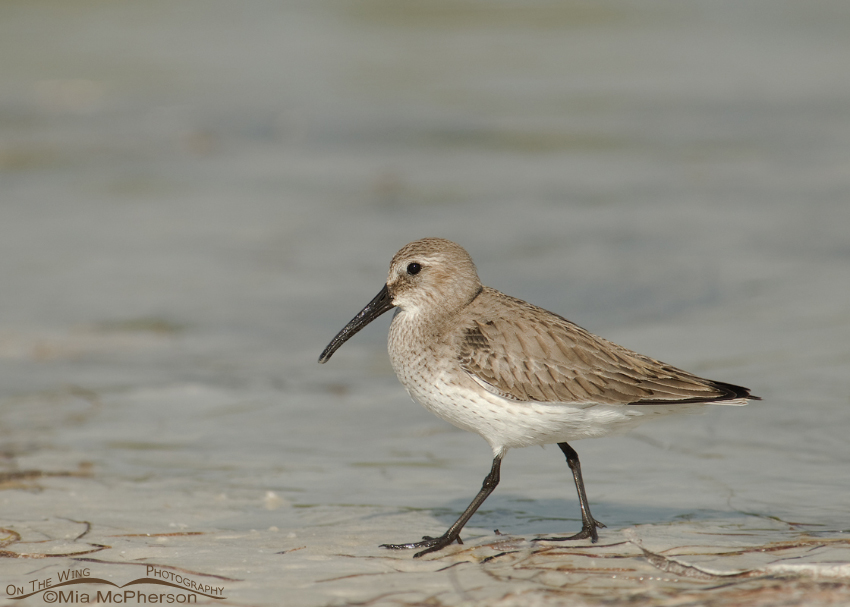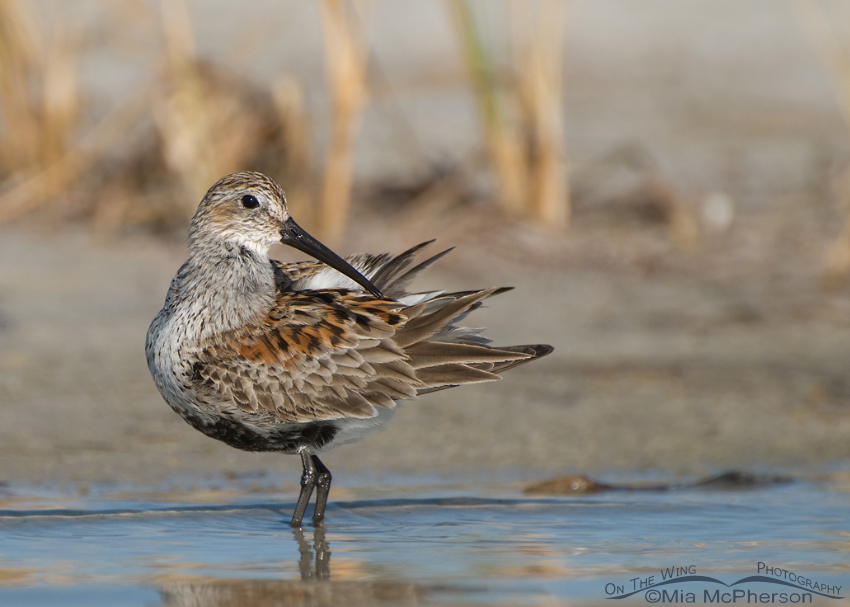 Dunlin in nonbreeding plumage – Nikon D200, handheld, f6.3, 1/1000, ISO 200, Nikkor 80-400mm VR at 400mm, natural light
Dunlin in nonbreeding plumage – Nikon D200, handheld, f6.3, 1/1000, ISO 200, Nikkor 80-400mm VR at 400mm, natural light
This is a Dunlin (Calidris alpina) in nonbreeding plumage, the image was taken at Fort De Soto’s north beach in Florida during the month of December a few years ago. During the winter Dunlins have dull gray-brown backs and heads with light-colored streaked breasts. These hardy shorebirds winter along coastlines from southern Alaska south to Florida and Mexico.
 Dunlin in breeding plumage – Nikon D200, handheld, f6.3, 1/640, ISO 160, Nikkor 70-300mm VR at 300mm, natural light
Dunlin in breeding plumage – Nikon D200, handheld, f6.3, 1/640, ISO 160, Nikkor 70-300mm VR at 300mm, natural light
This image shows a Dunlin in breeding plumage also taken at Fort De Soto’s north beach in May a few years ago about the time this shorebird would start its migration to Arctic and sub-Arctic areas of Alaska where it breeds on the tundra near ponds.
Dunlins exhibit a vast difference between nonbreeding and breeding plumage, so different that a novice birder might mistakenly believe that they were two different species. It is always handy to have images of Dunlins in breeding and nonbreeding plumage for comparison.
This small shorebird’s lifespan can be up to 24 years!
Life is good.
Mia
Click here to see more of my Dunlin photos plus facts and information about this species.


Their brownish colour is striking during breeding.
Thanks Maria.
This is awesome, I’ve never heard of these birds, the photos you present here will help me identify them if I ever do, thank you for sharing:)
Susan, I really hope you get to see & photograph Dunlins.
Wonderful color and clarity to these images Mia.
Thanks for your comment Stu!
I’m learning so much about birds from your posts Mia. Way to go. Carol
Thank you Carol, I’m glad you are learning more about birds from my posts!
The plumage in the breeding bird is fabulous and you have captured each detail in a picture perfect photo..
Thanks Syl~
Impressive! They look like they have such heavy noses too.
Thank you Laurence, the bill does look heavy!
Great shots. I love how different these birds can look in different plumages – makes the ID a challenge.
Thankd Dan, when I first started photographing Dunlins I thought they were two different bird species.